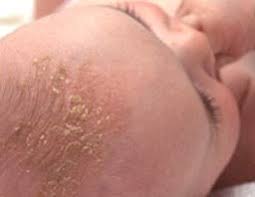Common signs of cradle cap include:
Patchy scaling or thick crusts on the scalp
Oily or dry skin covered with flaky white or yellow scales
Skin flakes
Possibly mild redness
Similar scales may also be present on the ears, eyelids, nose and groin.
Cradle cap is common in newborns. It usually isn't itchy.
Cradle cap is the common term for infantile seborrheic dermatitis. It's sometimes confused with another skin condition, infantile eczema. A major difference between these conditions is that eczema usually causes significant itching.
When to see a doctor
See your baby's doctor if:
You've tried treating it at home without success
The patches spread to your baby's face or body



 Contact Us
Contact Us







 Hospitals
Hospitals
 Doctors
Doctors
 Diagnostic
Diagnostic
 Pharmacy
Pharmacy
 Health Tips
Health Tips
 Blog
Blog

























Comments